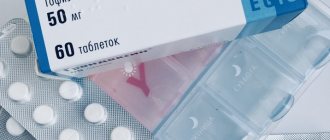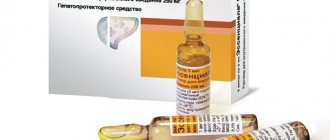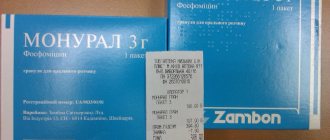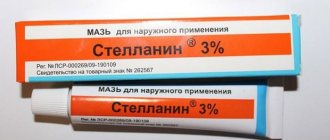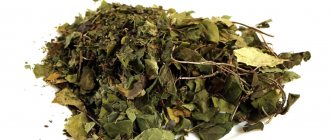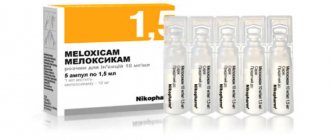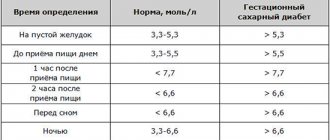Inflammation of the pancreas occurs when pancreatic enzymes remain inside the organ rather than being released into the small intestine. Self-digestion causes pain and cramping in the acute manifestation of the disease. Kvamatel for pancreatitis helps relieve symptoms and provide functional rest. For some time the drug was considered obsolete. But Kyiv doctors have developed an effective treatment course. Its main advantages are its bidirectional effect on the gland and the ability to relieve symptoms from the first day of an attack, when most oral drugs are contraindicated for use.
Description
The drug for intravenous use is a white powder (slight shades are acceptable). Excipients are mannitol and aspartic acid. This product is produced in bottles equipped with a rubber stopper of 72.8 mg (5 pieces in a cardboard box). The bottle is sealed with an aluminum cap on top of the stopper. The bottle comes with an ampoule containing a colorless liquid for dilution - sodium chloride with water. The ampoule contains 5 ml of solution. The pack contains 5 ampoules.
pharmachologic effect
This drug is a powerful inhibitor - a substance that suppresses the physiology of receptors that provoke allergic reactions (histamine). In particular, the drug reduces gastric production.
This drug suppresses nocturnal and basal acid production, as well as gastric secretions. The inhibition process lasts 10-12 hours (for doses of 20 and 40 mg).
The drug does not affect the gastrin content in serum. Gastrin is a hormone that is produced in the stomach. The substance does not have a negative effect on gastric emptying, the production of pancreatic juice and the enzymes that make it up and participate in the digestive process. No negative effects on the blood circulation of the liver and portal system were observed.
Kvamatel is used for intravenous infusions.
It has a slight connection (no more than 15-20%) with plasma proteins. The period during which half-life occurs is 2.5-3.5 hours. Famotidine is transformed in the liver.
60-70% of famotidine is excreted by the kidneys, the rest by metabolic means.
Description and form of implementation, properties
The medicine is actively used in medical practice as a broad-spectrum antiulcer drug. The main component of the composition is the substance famotidine, which reduces the production of digestive juices.
The product is available in two main forms:
- coated tablets for oral administration;
- powder for preparing a solution for injections.
The drug affects only the production of digestive juices and hydrochloric acid, thereby achieving the desired effect. This helps prevent the occurrence and progression of ulcerative lesions of the stomach and duodenum.
The medicine does not affect the secretory functions of the pancreas, liver functionality, intestinal and gastric motility.
After a single dose of the standard dosage of the medication, the desired effect lasts for 9-12 hours. Absorption occurs in the organs of the digestive system; residual components are excreted primarily through the kidneys.
Sales are made according to prescription. The cost of packaging depends on the manufacturer and region of sale and ranges from 100 to 450 rubles.
Indications for use
The instructions for use describe the following indications:
- peptic ulcer of the duodenum and stomach (without manigilization). Especially recommended in the acute phase and to prevent relapses.
- gastroduodenitis of an erosive nature.
- functional dyspepsia
- reflux esophagitis.
- other conditions with high secretion (for example, Zollinger-Ellison syndrome).
- preventive treatment to prevent bleeding in the gastrointestinal tract (in particular, in its upper parts).
- Use to prevent absorption of gastric contents (aspiration) while the patient is under general anesthesia.
The use of Kvamatel by dropper (intravenous jet or drip method) is indicated for patients only in the most severe cases, when oral administration of this medication is impossible.
Important. The use of droppers with Kvamatel is possible only in a hospital under the supervision of medical personnel. If the patient's condition improves, at the first opportunity, a switch to the tablet form is made.
Interaction with other medications
The peculiarities of combining Kvamatel with other drugs for pancreatitis are known:
- Simultaneous administration of Amoxicillin enhances the absorption of the antibiotic. The antifungal agents Ketoconazole and Itraconazole react in the opposite way, penetrating into body cells less well.
- Antacid medications that reduce acidity in the stomach (Rennie, Vikalin, Almagel and others) weaken the effect of Kvamatel. They prevent its absorption by creating a protective film on the walls of the organ.
- When administered simultaneously with substances that inhibit hematopoiesis (Dopan, Novembikhin, Thiophosphamide and others), the number of neutrophils in the blood decreases.
To prevent such an interaction, you need to space your medication intake by 2 hours. Also, you should not take Kvamatel with other drugs containing famotidine to avoid overdose.
Preparation and administration of the solution
The solution is always prepared immediately before administration. For its preparation, only solutions that are colorless and completely transparent are used.
Preparation of the solution includes the following steps:
- Open the ampoule with the solvent.
- Use a syringe to remove all contents from the ampoule.
- Having removed the aluminum cap from the bottle with the active substance, you need to pierce the rubber stopper and introduce all the solvent into this bottle.
- stir until a completely homogeneous substance is obtained.
- take the entire mixture into one syringe and inject.
When administered as a dropper, the preparation is initially similar, only then it is necessary to pour the resulting mixture into the infusion solution.
For gastric and duodenal ulcers during an exacerbation, it is administered by injection very slowly, 20 mg twice a day, always in a diluted state. The same recommendations apply to reflux esophagitis.
Treatment of Zollinger-Ellison syndrome requires frequent administration of the drug: 20 mg every six hours is the initial dosage, then it will depend directly on the total amount of secretion and the general condition of the patient.
Instructions, dosages
WE RECOMMEND THE ARTICLE!
Gastal is an antacid drug used for heartburn or other dyspeptic disorders. Read more >>
At home, adults should take the medication in tablet form. During administration, there is no need to crush the medicine; you can take the dosage with a glass of water. Kvamatel should be used one tablet per day with regulation of food intake (the dose must be taken an hour before meals).
The indicated dosages also apply to the drug Kvamatel Mini.
The maximum allowable dosage is two tablets per day.
As a rule, the solution is not available in ampoules. It is prepared immediately before administration in an outpatient or inpatient setting. Each dose of powder is dissolved in saline in a volume of 9 milliliters and injected into a vein within two minutes. In some cases, administration is allowed over 15-20 minutes.
The course of therapy for any chosen form of medication is two weeks. At the discretion of the doctor, the duration of treatment may be increased. However, if the symptoms of the disease do not subside within the first seven days, the patient should consult a doctor.
[media=
https://youtu.be/ZQ_t-tnE39s
]
Side effects
The instructions for using Kvamatel intravenously describe the following adverse reactions:
- Digestive system: some symptoms such as dry mouth, increased gas formation in the intestines, and decreased appetite are possible. Less commonly, nausea and vomiting, abdominal pain, diarrhea or, conversely, constipation are possible.
- Hematopoiesis: conditions such as agranulocytosis, pancytopenia, decreased levels of leukocytes or platelets are extremely rare.
- Allergies: skin rashes, urticaria, itching, bronchospasm. In especially severe cases, but extremely rarely, angioedema and even anaphylactic shock are observed.
- Cardiovascular system: disturbances in the frequency and rhythm of heart contractions, low blood pressure, AV block, disturbance of sinus rhythm of the heart.
- Sense organs: sensation of ringing in the ears, minor visual disturbances are possible.
- Central nervous system: headache with symptoms of dizziness, increased feeling of drowsiness and fatigue. Much less often - disturbances of consciousness and hallucinations, depression and feelings of increased anxiety.
- Reproductive system: with especially long-term use and high dosages, libido decreases, the mammary gland enlarges (gynecomastia) and there is no menstrual cycle (amenorrhea).
- Musculoskeletal system: joint pain of a volatile nature (arthralgia) or bone spasms, possible manifestations of pain in muscle tissue.
- Skin manifestations: acne, increased dryness of the skin, epidermal necrolysis of a toxic nature, increased hair loss (alopecia).
Among other manifestations, febrile conditions are possible.
Important. It should be added that the above side effects are extremely rare.
Contraindications
Possible contraindications:
- the entire period of pregnancy.
- an absolute contraindication for the entire period of breastfeeding. If, nevertheless, there is an urgent need to use Kvamatel, then breastfeeding is stopped.
- childhood.
- sensitivity to individual components of the drug composition.
- hypersensitivity to other blockers of causative agents of allergic reactions.
Important. This drug is prescribed with extreme caution and in very small doses to patients with renal or liver failure and liver cirrhosis.
If there is a malfunction of the kidneys, the dosage of the drug is reduced to 20 mg with a mandatory increase in the interval between injections to 36-48 hours. If there is no improvement in kidney function, then this treatment should be discontinued altogether.
special instructions
Prescribing the drug Kvamatel by injection is a reason to be especially careful, because in some cases it can hide the symptoms of stomach cancer. In this regard, before starting therapy with famotidine, you need to make sure that there is no malignant process in the body. Withdrawal syndrome may occur if the drug is abruptly stopped. A slow reduction in dosage is necessary before discontinuing the drug.
If the drug was prescribed for the treatment of a particularly weakened patient, and also if it was indicated for a patient experiencing a stressful situation, then bacterial stomach problems and further development of infection cannot be ruled out.
This drug suppresses the body's response to an irritant (histamine), which leads to false negative results. Therefore, if any diagnostic skin tests are performed, Kvamatel should be temporarily suspended.
During the entire treatment with Kvamatel, it is necessary to monitor your diet and exclude from it foods, drinks and other medications that irritate the gastric mucosa. Patients whose daily activities involve driving or have potential dangers require increased caution.
Kvamatel for children
Despite the fact that contraindications include children's age, this drug is actively used in the treatment of stomach or duodenal ulcers in children under 7 years of age. Manufacturers of the drug explain that the use of Kvamatel is possible from the age of 16, but in medical institutions under the supervision of medical staff, treatment of much younger children is practiced. Such use is considered completely justified and does not have negative consequences for the child.
In childhood, diseases of the gastrointestinal tract very often develop, specifically associated with increased secretion of gastric juice. Therefore, therapeutic treatment in children is always aimed at reducing its production. Kvamatel is exactly the drug that effectively reduces gastric secretion even when used in minimal doses. As a rule, this drug is prescribed to children in the same cases as in adults. Intravenous injections of Kvamatela in childhood are indicated when bleeding and bleeding ulcers occur.
The justification for treatment with Kvamatel in children is due to the following reasons:
- effective reduction in the production of hydrochloric acid and a lasting effect.
- protective effect on the mucous membrane of the esophagus and stomach through the regeneration of epithelial cells.
The dosage of the drug is calculated based on the child’s weight: 2 mg of medication per 1 kg of weight. As a result of such calculations, the total daily dosage is obtained, which is divided into two times - for morning and evening injection administration. Please note that the total amount should not exceed 40 mg.
The mechanism of action of the drug for pancreatitis
To eliminate acute symptoms, their source must be eliminated. In case of pancreatitis, this requires resting the pancreas. Typically, therapeutic fasting is used for three days and a special diet. In the first days of an attack, tablets should not be used so as not to increase the secretion of the glands. Therefore, Kvamatel is used in injection form.
The medicine belongs to the category of 3rd generation H2-histamine receptor blockers. The main active ingredient is famotidine. It reduces the secretion of enzymes due to its bidirectional action:
- Inhibition of histamine receptors blocks the signal to the glands, stopping the process of enzyme production. This is how the pancreas stops producing secretions, preventing the worsening of autolysis (self-digestion).
- A similar effect occurs on the walls of the stomach. The production of gastric juice is reduced. Accordingly, the acidity of the environment in the duodenum decreases. The pancreas glands react to this by reducing the release of secretin (a hormone that activates the production of enzymes).
The drug needs to be supplemented with M-anticholinergics, which relieve spasm from the sphincter of Oddi, and also improve microcirculation in the pancreas, accelerating the release of cells from juice. If you take Kvamatel for acute pancreatitis, improvement can be achieved on the first or second day, depending on the severity of the attack, by combining it with Gastrocepin.
Reviews from doctors and patients
According to doctors, the drug Kvamatel is an excellent remedy that is highly effective. The release forms are convenient - it is available both in tablets and in solution for injections and droppers. A clear advantage is its use for the treatment of disorders in children.
Among patients, opinions are also in favor of Kvamatel.
- Ivan, 42 years old. “I have been suffering from gastritis with high acidity for a long time, with constant heartburn, discomfort, and it is especially difficult in moments of exacerbation, when debilitating stomach pain appears. At some point, I was prescribed Kvamatel and I felt some good positive dynamics. At least the pain has stopped bothering me so much and the heartburn has partially gone away.”
- Anton, 46 years old. “I have been diagnosed with a duodenal ulcer for a long time. I periodically receive courses of treatment. I took Ranitidine, but recently they recommended treatment with Kvamatel injections. I noticed the effect almost immediately, on the fourth day. The pain stopped bothering me, heartburn and acid belching practically disappeared.”
- Lilia, 32 years old. “I bought Kvamatel on the advice of a friend when my gastritis worsened. I was pleased with the price. Helps with heartburn. Now I periodically undergo courses of treatment with this drug, but only on the recommendation of a doctor.”
- Nina, 48 years old. “My husband has long been diagnosed with a stomach ulcer and inflammation of the pancreas. He always had a whole bunch of different medicines with him. Moreover, the more of them there were, the worse they acted. The doctor prescribed Kvamatel injections for my husband. This medicine is the first remedy that helped him! And what’s also great is that my husband has no side effects on him - the drug was just perfect! After periodic courses of treatment, long-term improvement occurs!”
Other drugs used to unload the pancreas
Kvamatel is not the only medicine used to reduce acidification of the duodenum.
There are other drugs that have different characteristics of action, which are used as an addition to the therapeutic course or to replace the main medication.
- Contrical and Gastrocepin. Medicines are based on pirenzepine. They free the pancreatic ducts from enzymes, improving the circulation of juice. The use of such infusions with Kvamatel is considered very effective. But Kontrikal in practice often causes adverse reactions. Therefore, Gastrocepin is used more often.
- Pantoprazole and Omeprazole. Second-generation proton pumps are more effective than their predecessor, Lansoprazole, and are considered a new step in the treatment of pancreatitis. But they act only on the stomach, without affecting the secretion of the pancreas, only indirectly reducing the production of somatostatin and secretin.
There are also 3rd generation protease blockers (Rabeprazole). But effective methods using them create a high financial burden for the patient. Therefore, the doctor, when offering various treatment options for pancreatitis, will take this factor into account.
1

